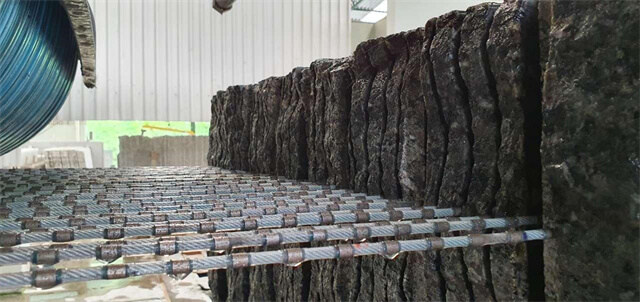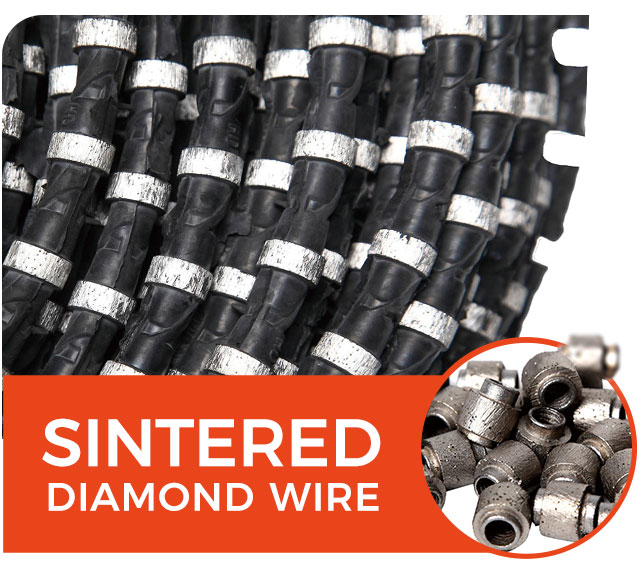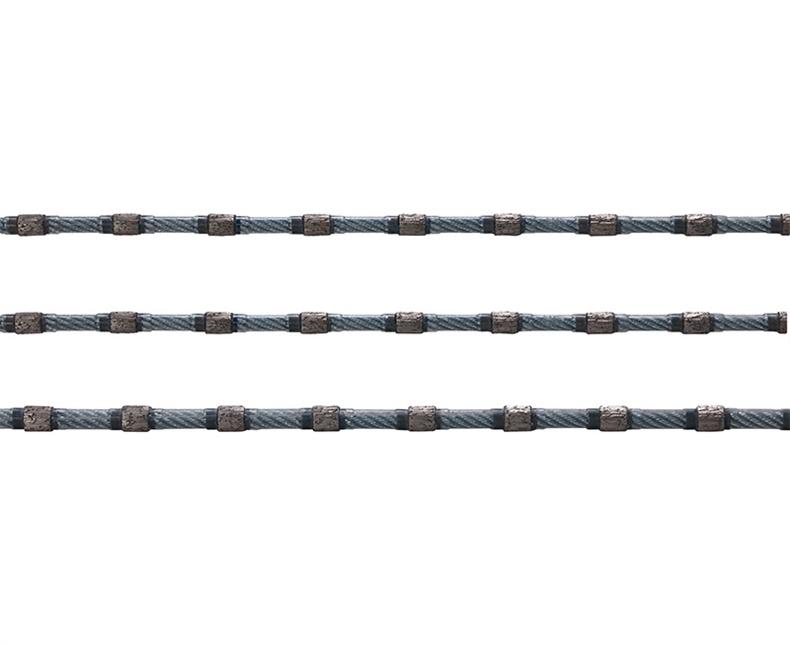Author:Huada Quarrying Machine FROM:Stone quarry machine manufacturer TIME:2024-11-13
Choosing the right diamond wire for specific stone types is crucial for achieving optimal cutting performance and efficiency in various stone processing applications. The diamond wire saw has become an indispensable tool in the stone industry, offering precision and versatility for cutting different materials such as granite, marble, and concrete. However, the effectiveness of this tool heavily depends on selecting the appropriate diamond wire that matches the characteristics of the stone being worked on. In this article, we will explore the factors to consider when choosing diamond wire, the different types available, and how to match them with specific stone types.
Before diving into the selection process, it's important to understand the technology behind diamond wire. Diamond wire saws consist of a steel wire embedded with diamond segments. The diamonds are what provide the cutting power, allowing for precision cuts with minimal waste. The configuration of the wire, including its diameter, the size of diamond segments, and the spacing between them, all play significant roles in determining how well the wire will perform on different stone types. Therefore, familiarity with these elements is essential for making informed decisions.

Different types of stones have unique characteristics that influence their cutting behavior. For instance, granite is a hard and dense material, while marble is softer and more prone to chipping. Understanding these properties is critical when selecting diamond wire. Consider factors such as hardness, brittleness, and porosity, as they directly affect how the stone interacts with the diamond wire. Conducting preliminary tests on sample pieces can also help gauge how a particular diamond wire will perform on the stone type in question.

The diameter of the diamond wire is one of the first specifications to consider. Typically, smaller diameter wires (around 6-8 mm) are better suited for softer materials like marble, providing finer cuts and less waste. Conversely, larger diameters (10-12 mm or more) are recommended for harder stones like granite, as they offer greater durability and cutting speed. The choice of diameter should align with the specific stone characteristics to ensure efficient cutting.
The size of the diamond segments is another critical factor. Larger segments can cut through tougher materials more quickly but may leave a rougher finish. Smaller segments provide a smoother cut but may require more time and effort to achieve the desired results. When selecting diamond segment sizes, consider the finish quality required for the final product, as well as the time constraints of the project. Balancing these factors will help determine the best option.
The arrangement of the diamond segments along the wire also affects cutting performance. Different configurations can be used to optimize the cutting process for specific stone types. For example, a continuous wire configuration may work well for softer stones requiring smooth cuts, while a segmented configuration may be more effective for harder materials needing aggressive cutting capabilities. Evaluate the cutting demands of your project and select a configuration that complements those needs.

The bonding matrix, which holds the diamond segments in place, plays a significant role in the wire's overall performance. A softer bonding matrix allows diamonds to wear down more quickly, which can be advantageous for softer stones as it continuously exposes new cutting edges. Conversely, a harder bonding matrix is ideal for tougher materials, ensuring that the wire maintains its cutting ability over a longer period. Understanding the relationship between the stone type and the bonding matrix is essential for making an educated choice.
Cutting speed is another vital consideration when selecting a diamond wire. Faster cutting speeds are generally desirable; however, they must align with the type of stone being cut. For harder stones, a slower cutting speed may be necessary to prevent overheating and damage to both the stone and the wire. Conversely, softer stones can often be cut at higher speeds without compromising quality. Balancing speed with the risk of wear and tear on the wire and the stone is key to achieving efficient results.
While performance is paramount, cost is also a crucial factor in choosing the right diamond wire. Higher quality wires with advanced features may come at a premium, but they can significantly enhance productivity and reduce downtime. It’s essential to evaluate the cost-effectiveness of different options by considering the volume of work, the expected lifespan of the wire, and the quality of cuts required. Investing in the right diamond wire can lead to long-term savings through improved efficiency.
Choosing the right diamond wire for specific stone types involves a thorough understanding of both the stone characteristics and the technical specifications of the wire itself. By considering factors such as wire diameter, diamond segment size, configuration, bonding matrix hardness, cutting speed, and cost, you can make informed decisions that enhance cutting performance and efficiency. Ultimately, the right choice will not only improve the quality of your work but also optimize your overall workflow in stone processing operations.